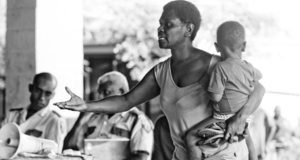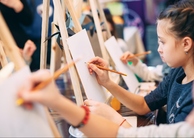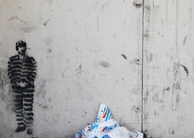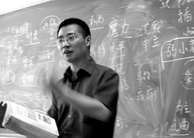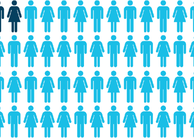The Researcher at the Dance: Epistemology, Ethics and the Ethnographer
By
2015, Vol. 7 No. 03 | pg. 1/2 | »
IN THIS ARTICLE
KEYWORDS
Before the ethnographer can enter the field of research, indeed, before the researcher can interpret data from the field, he or she must first be aware of how knowledge and meaning are made. The epistemological lens the ethnographer uses will have crucial implications on the hows and the whys—not only of the research itself—but on the role of the researcher. This essay will argue (with the assistance of two young parents, one salmon, and a farm yard full of dancers) that the only ethical ethnography is critical, and the responsibility of the ethnographer is to actively participate in the shaping of a more just humanity. This is the “inescapable concern” of which Paulo Freire speaks, and the “capacity for creative collaboration” John Dewey celebrates. Just as the two parents we will soon meet (and their young daughter, with us only in spirit) the ethnographer is not separate from the human project. If we are active agents in the shaping of our reality then we have an ethical responsibility to be co-creators in a more socially just society. Two Young ParentsSometime in the early 1990s a young couple sat in front of a school principal seeking admission for their daughter. The office, and the man himself, must have been of non-descript or such common nature that details of either have not survived the years that followed. As they sat in front of the middle aged gentleman (he was, they remember, much older than themselves, so ‘middle aged’ will suffice) they said a magical word and a magical thing happened—they both saw inside of the man’s mind. When I say they saw inside, what they actually perceived was the image of their daughter that the man created in response to a word that was attached to a description of their child. They saw their daughter through his mind’s eye. The only reason why they had driven so far to his school, reputed to be open, welcoming, and alternative, was that they were so frustrated with the experiences of the schools in their locale. They wanted a school that would be open and welcoming to their daughter. So there they sat in this man’s office, not pleading (they would not demean themselves in that way—yet) but exploring the possibility of their daughter’s enrolment in ‘his’ school. The magical word the parents used was ‘disabled.’ Language is indeed very powerful. There is a school of thought that believes that without language, we cannot think. Or, put more fluently, that language provides us with the ability to think, and therefore, language precedes thought. Descartes postulated that, “I think, therefore I am,” but it is perhaps more accurate to say, “I think, because I can.” A clever play on words, but the point is that Descartes could not think without the language to express his thoughts. Language assumes a pivotal role in framing what is considered to be reality; even more, language assumes a pivotal role in allowing us to frame what we consider to be reality. One word uttered by these two loving parents was instrumental in creating a reality in the mind of the school principal. That the ‘reality’ created by the principal was far from the reality of the parents’ experience and knowledge of their daughter was the reason why they left his office.Habermas theorised about an ‘ideal speech situation’ where individuals could converse clearly to each other, with each individual expressing themselves and listening to the other unfettered by their own ideas and interpretations of meanings (Burr, 1995). In such a ‘situation’ parents and principal would not construct realities so diametrically opposed. Giddens elaborated on this ‘ideal’: “the more social circumstances approximate to an ideal speech situation, the more a social order based on the autonomous action of free and equal individuals will emerge” (Crotty, 1998p. 144). There is an awareness in this that most communication is primarily carried out in less than ideal situations. We use our words to communicate, but our meanings are not always transparent. Rather than seeing through a clear lens, we see the world, and communicate to others in our world, through a medium that is rather opaque. Language assumes a primacy in trying to make sense of our world. It provides the means in which to make meaning, of that world and of ourselves. And yet, language is not created individually. An individual is born into a society that has developed and is continuing to develop its own language. This language is then bestowed on the growing child as he or she matures. Simple labels, or ‘signs’ as Saussure would prefer (Burr, 1995) allow our children to become aware of their surroundings—‘dog’, ‘car’, ‘hungry’, ‘mother’. These labels are expanded so that more complicated concepts are made possible. An important feature of these concepts is that their meanings are not universal, nor are they random. They are determined by the societal or cultural contexts in which they are learned. In this way language brings a framework to reality for us, which is enacted in our cultural context. Like that context, language is not static or fixed, and as a result neither is the framework of our reality. Language (meanings, signs) change and take different meanings over time. The meanings carried by language are contestable. The language used in that principal’s office so many years ago framed his perception of reality based on his conception of ‘disability’, as well as other words probably including ‘responsibility’, ‘community’, ‘rights’, or ‘burden’. He came from the same society as the two parents sitting opposite him, but still held differing interpretations of meaning. The interaction that took place (enabled by language) may not have gone the way our parents had desired, but it contributed significantly to their knowledge of their world. I am sure that the principal’s experience also contributed to his knowledge. The interaction, and the meanings they all took from it, helped construct their understanding of their reality (Berger & Luckmann, 1967). To say that understanding or meaning is constructed implies a human agency. “The image invoked,” writes Crotty, “is that of humans engaging with their human world. It is in and out of this interplay that meaning is born” (1998 p. 45). Language may provide us with the ability to form thought, but language is only made possible through human interaction—humans interacting with each other and with their world, of which they are an inseparable part. The lens through which this interaction takes place is the way in which we see and understand the world around us, through the language learned in our specific cultural and societal context. We are each individual and distinct human beings, yet we are products of a larger grouping. Our individual existence is made possible by that larger group; we could not exist separate or isolate from it. Through the group we learn the language and acquire the tools with which to construct meaning. How we construct that meaning depends on our culture, values, and beliefs. One SalmonVivien Burr (1995) has likened this immersion in culture to a fish swimming in water. She points out that the concepts we operate with are tied irrevocably with the types of societies we live in. The fish swims in the water that defines and also sustains its existence, just as we live and make sense of our world in the cultures in which we are born. The two cannot be separate: the individual and their culture, just as the fish cannot be removed from the water. The water is the medium through which the fish makes sense of its reality. Removing the fish from the water would mean that the fish would not be able to survive. Removing the individual from the social context in which they live would render that individual anchorless, with nothing in which to interpret or contextualise their reality. This is an important point to emphasise—the individual is not separate from their environment (culture/society) but rather in a symbiotic relationship with it. The metaphor of the fish, while attractive in illustrating the relationship between the individual and the culture in which they live, has several limitations. The fish, and for illustrative purposes, the salmon, lives within the medium of water, at times fresh water, at other times sea water. The salmon responds to a rhythm of life, with a cycle akin to infancy, youth, and adulthood. However, its ultimate destiny is essentialist in nature. It will develop into a smolt (if it survives to 1 to 3 years) and group with other smolts to move out to sea. There, the salmon will grow to adulthood until a time, up to eight years, when it will return instinctively to its place of birth to spawn, creating another generation of salmon to repeat the process. After spawning, the salmon will die. The salmon, the fish, is not an active agent in its existence. It is guided by a nature—a salmon nature, if you will—that has been continuing for millennia. Humans, to paraphrase Marx, do not have a nature, they have a history. The human world is a world in perpetual motion (Kaldec, 2007), and the individual human is an active agent in that world. The fish does not reflect on it’s ‘fishness’, nor the trajectory of its life. All other species—insect, mammal, bird, reptile or amphibian—is similar in this respect. And because of this another metaphor is required. Freire (1996) points out that the ability to reflect and transform their reality is what separates humankind from any other species on the planet. Alone among the species, human beings have a vocation, an “inescapable concern,” to become fully human. Like Burr’s metaphor of the fish and the water in which it lives, Freire states that, “[w]orld and human beings do not exist apart from each other, they exist in constant interaction” (1996 p. 32). The crucial difference between humans and all others species is that humans can reflect and act upon their world to transform it. Animals live in a perpetual moment; they cannot transform their environment, they adapt to it. Humans alone transform their reality. A Farm Yard Full of DancersHere, rather than give the salmon undue intelligence, a metaphor involving humans is needed to illustrate the unique role they play in creating the knowledge that transforms that reality. In 1566, Pieter Brueghel the Elder painted a scene that is up to the task. The Wedding Dance, like life itself, is creative, colourful and vibrant; it is a feast for the senses. Set in the open air, a wide variety of individuals are seen interacting. On the periphery some converse and some watch; however, the majority of the folk dance gaily. By focusing closely on these dancers more of an epistemological insight is gleaned. Their dress, the setting, even the dance itself reflects a specific time and place. This time and place (denied the salmon because of its animal nature) is specific to the characters in the painting. A more astute eye could no doubt identify the Dutch province in which these dancers resided. The wooden shoes and codpieces represent a time past. For a time they were fashion, they were what folk at dances wore. Similarly, knowledge—the ways we understand the world, and the concepts developed to understand it—are historically and culturally specific (Burr, 1995) .Taking one of the dancers from their world would rob them of the conceptual foundations on which they based their existence. Transported to the 21st century they would not die, like the salmon taken out of the water, but they would no longer have a handle on what they lived as reality. This hypothetical time travelling dancer would have to learn a new language in which to make meaning of their new situation. Left in isolation, it is difficult to imagine how the dancer could do anything more than stare bemusedly as large objects flew overhead in the sky, or what appeared to be iron wagons loudly sped past on rock hard yet smooth surfaces. Only by engaging with other humans could the dancer begin to make sense of her new surroundings. But it would be cruel to remove a single dancer from the festive scene portrayed by Brueghel. Let us instead look more closely at the revelries. Like their costume, the dance itself belies a cultural context. What is significant, however, is the variety of expressions the dance takes. Each pair of dancers is seen moving differently from other pairs. Some pairs have even joined to formed trios. Some face each other, some even kiss. Looking beyond the dancers, revellers can be seen talking, drinking, or simply taking in the scene. The painting without the revellers would be mere landscape. This is not to imply that without the revellers that scenery would not be real. What it would be devoid of is meaning. The ground would still be there, as would be the farm house and the trees, but without the humans to inhabit that space, the ground, the house, the trees would have no meaning. It is through the human mind that the meanings attached to those ‘things’ are constructed. The lone human cannot do this, as we have seen with our poor bemused and isolated time traveller. That is why Brueghel’s dancers are called upon. The dancers are an inseparable part of the world in which they dance. Their connection to it and with it is indissoluble. They dance through the medium of their time and place—their cultural context and the environment in which they live. This interaction is how they create knowledge (Berger & Luckmann, 1967). Unlike the fish immersed in its watery context, humans exercise an agency in that interaction. The dancers at this wedding follow certain rules (of dress, of etiquette and of conduct) but they also consciously interact with their surroundings. They add flair to their step, like the gentleman kicking his heel. They seize the moment, like the couple kissing. Here reality is being crafted consciously, through the medium of experience (Kaldec, 2007). The dancers interact with each other interdependently. Their moving and changing dance is powerful metaphor for a world that is in constant motion. They are not, like the salmon, swept along by some instinctive current. They intelligently craft their movements in relation to the motion of the dance as well as their own intentions. This dynamic interplay between humans and their world is the very thing that makes them human. “Actively to participate in the making of knowledge,” wrote John Dewey, “is the highest prerogative of men and the only warrant of his freedom” (Dewey, 1910, qouted in Kaldec, 2007). To intelligently craft their movements means that the dancers reflect and act while they are dancing, a process known as praxis. Freire would later write in The Pedagogy of the Oppressed that humans are beings of the praxis: Only human beings are praxis—the praxis which, as the reflection and action which truly transform reality, is the source of knowledge and creation. Animal activity, which occurs without praxis, is not creative; people’s transforming activity is...Through their continuing praxis, men and women simultaneously create history and become historical-social beings (Freire, 1996 pp. 81-82). The dancers cannot only add flair to their dance, they can change the very way they dance, as well as the music that guides it.Continued on Next Page » Suggested Reading from Inquiries Journal
Inquiries Journal provides undergraduate and graduate students around the world a platform for the wide dissemination of academic work over a range of core disciplines. Representing the work of students from hundreds of institutions around the globe, Inquiries Journal's large database of academic articles is completely free. Learn more | Blog | Submit Latest in Education |








